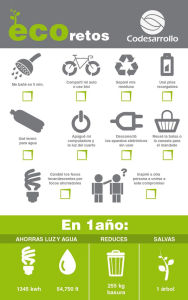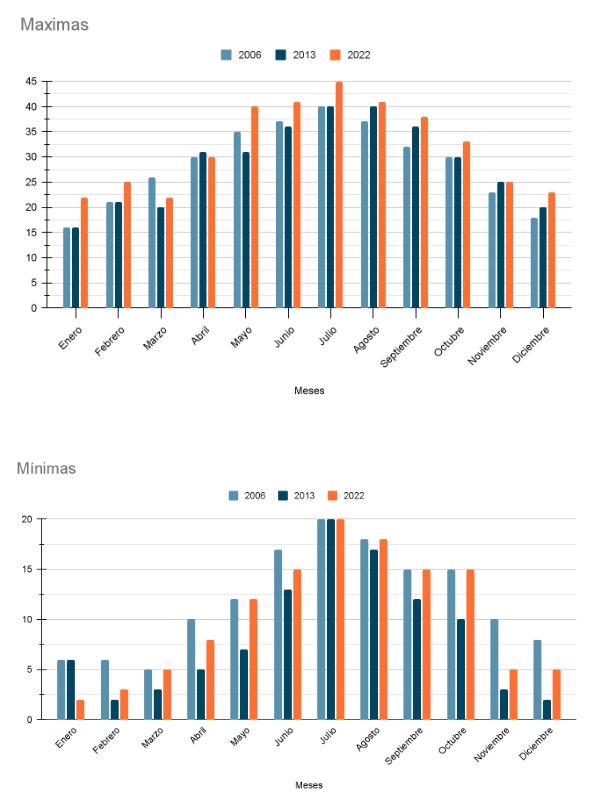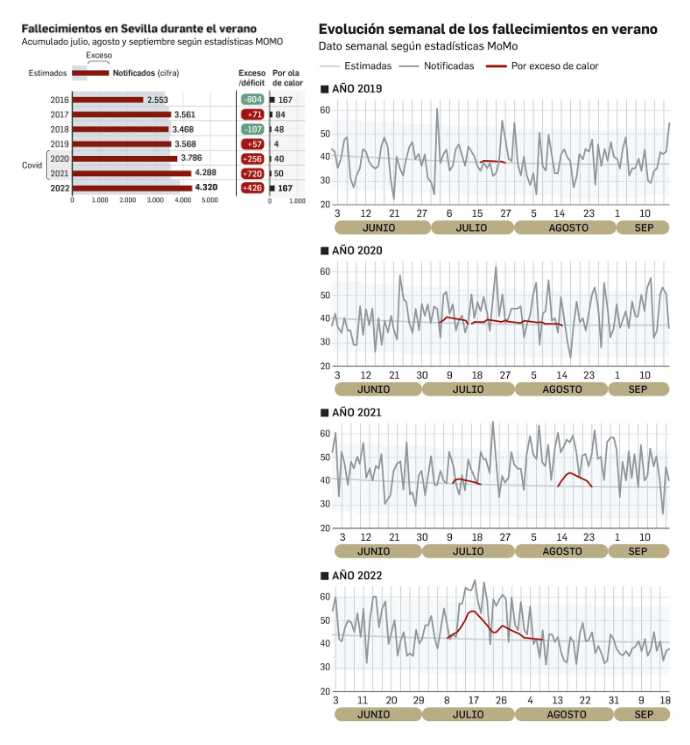Climate Detectives Projects 2022-2023
Project title: Temperature increase in Seville.
Team: Space Agents.
IES Nervión Sevilla España 5 Student’s age: 16-17 years old
How much has the temperature increased in Seville and why?
¿Cuánto se ha incrementado la temperatura en Sevilla? ¿Por qué?

We have investigated temperature changes in the province of Seville over several years to confirm that the temperature in Seville has increased over the years. To investigate we have collected temperature measurements using thermometers in degrees Celsius in the province of Seville. The measurements were taken daily during the year 2022 and recorded along with the corresponding date in each box. In addition, historical data were collected from professional meteorological sources such as AEMET for previous years. This temperature rise caused by pollution has a reciprocal relationship with global warming.
Hemos investigado los cambios de temperatura en la provincia de Sevilla durante varios años para confirmar que la temperatura en Sevilla ha aumentado con el paso de los años. Para investigar hemos recopilado mediciones de temperatura utilizando termómetros en grados Celsius en la provincia de Sevilla. Las mediciones se tomaron diariamente durante el año 2022 y se registraron junto con la fecha correspondiente en cada casillero. Además, se recogieron datos históricos de fuentes meteorológicas profesionales como la AEMET para años anteriores. Esta subida de temperatura ocasionada por la contaminación tiene una relación recíproca con el calentamiento global.

According to an article in the Diario de Sevilla, Seville’s Pablo de Olavide University (UPO) participated in a global study that demonstrates the true role that man-made climate change has played in increasing heat-related mortality risks. In Seville, heat-related deaths occurred 31.8 % of the time between 1991 and 2018. The study concludes that the proportion of heat-related deaths is expected to increase if nothing is done to stop or adapt to climate change.
In conclusion, over the last few years in Seville, temperatures have increased considerably, since the maximum summer temperatures are higher and the minimum temperatures also tend to increase. As a result, the temperature range is increasing and it is generally warmer, thus extending the warm months and decreasing the colder winter months. This is largely a consequence of global warming, which affects the whole world, including Seville. Moreover, Seville, not being a coastal city, has no temperature regulator like the sea. Not only does this affect the temperature, but also the fact that Seville is the city with the lowest elevation in Andalusia, which means that it does not get as much wind, which also partly regulates the temperature. This causes many deaths in Seville due to the heat, especially in summer when these extreme heat waves occur. If this problem is not solved, it could cause many more deaths than those already caused, a poor quality of life and a very high level of emigration due to the current high temperatures in Seville.
Según un artículo del Diario de Sevilla, La Universidad Pablo de Olavide (UPO) de Sevilla participó en un estudio global que demuestra el verdadero papel que el cambio climático provocado por el hombre ha jugado en el aumento de los riesgos de mortalidad relacionados con el calor. En Sevilla, las muertes relacionadas con el calor ocurrieron el 31,8 % del tiempo entre 1991 y 2018. El estudio llega a la conclusión de que se espera que aumente la proporción de muertes relacionadas con el calor si no se hace nada para detener o adaptarse al cambio climático.
En conclusión, a lo largo de los últimos años en Sevilla, las temperaturas han aumentado considerablemente, puesto que las máximas en verano son más altas y las mínimas también tienden a aumentar. Por lo que el rango de temperaturas sube y hace, en general, más calor, ampliando con esto los meses de calidez y disminuyendo los meses más fríos de invierno. Esto es en gran parte consecuencia del calentamiento global, que afecta a todo el mundo, incluyendo Sevilla. Además, Sevilla al no ser una ciudad costera, no tiene ningún regulador de temperatura como lo es el mar. No solo esto afecta a la temperatura, sino también que Sevilla es la ciudad con menos elevación de Andalucía, lo que hace que no llegue tanto viento que también regula, en parte la temperatura. Esto provoca muchas muertes en Sevilla por el calor, especialmente en verano que es cuando se dan estas olas de calor tan extremas. Si este problema no se soluciona puede provocar muchas más muertes de las ya ocasionadas, una mala calidad de vida y una emigración muy grande por las temperaturas tan elevadas que hay actualmente en Sevilla.

To solve this problem, we propose to make more green areas in which the areas where the sun shines for many hours of the day are reduced, this can be achieved by planting trees that provide shade. In addition, the emissions of gases that go directly into the atmosphere, which come from factories and cars, should be reduced, which could be solved by using public transport, electric vehicles and/or manual vehicles such as bicycles, scooters… In addition, reducing rubbish and plastics among others.
Para solucionar este problema, proponemos hacer más zonas verdes en las que se reduzcan las zonas donde da durante muchas horas del día el sol, esto se puede conseguir plantando árboles que den sombra. Además, se deberían reducir las emisiones de gases que van directamente a la atmósfera, que vienen de fábricas y coches, que se podría solucionar usando transporte público, vehículos eléctricos y/o vehículos manuales cómo las bicicletas, patines…Además, reducir la basura y los plásticos entre otros.
This project was automatically translated into English.
Projects are created by the teams and they take the full responsibility of the shared data.
← All projects






